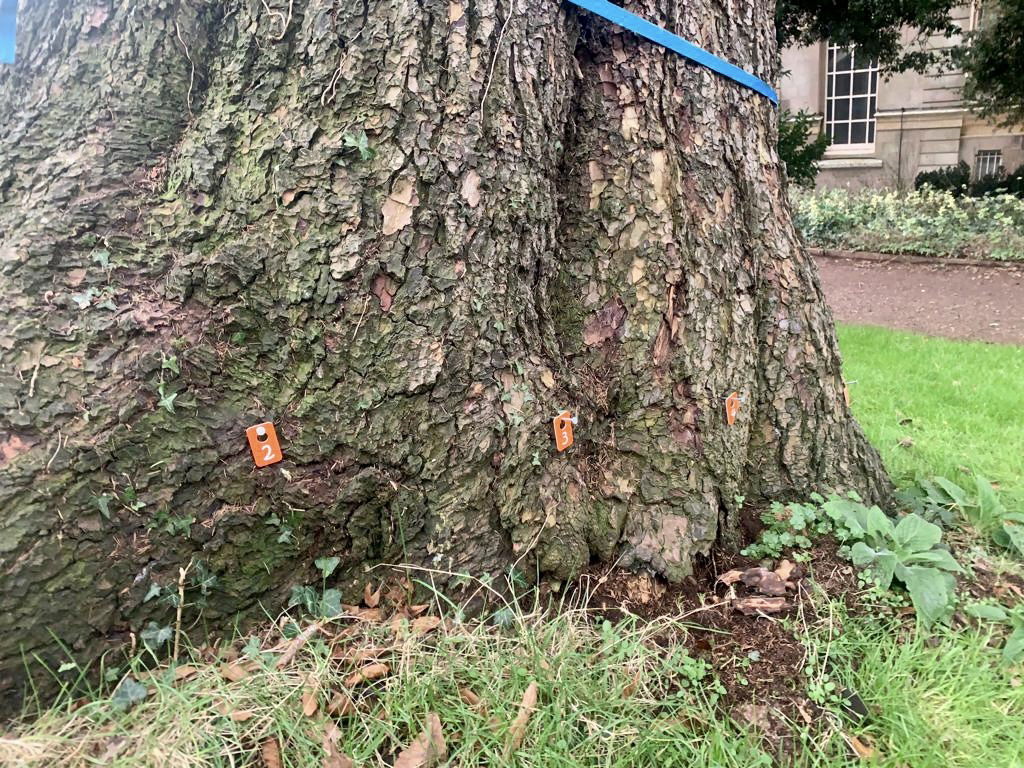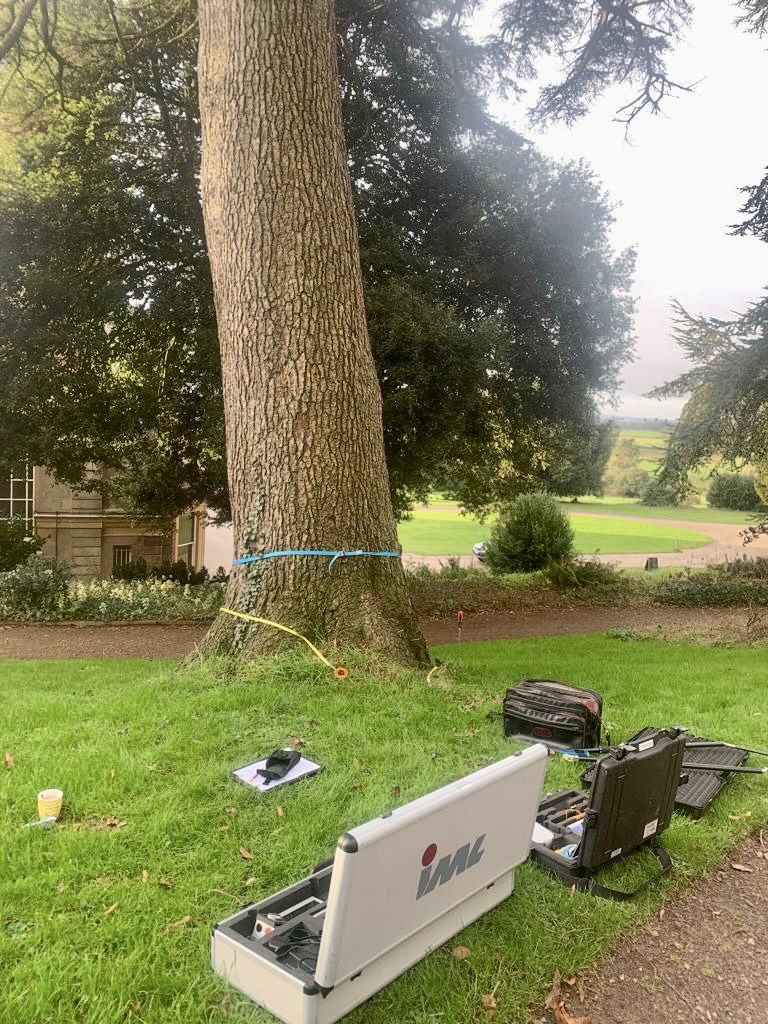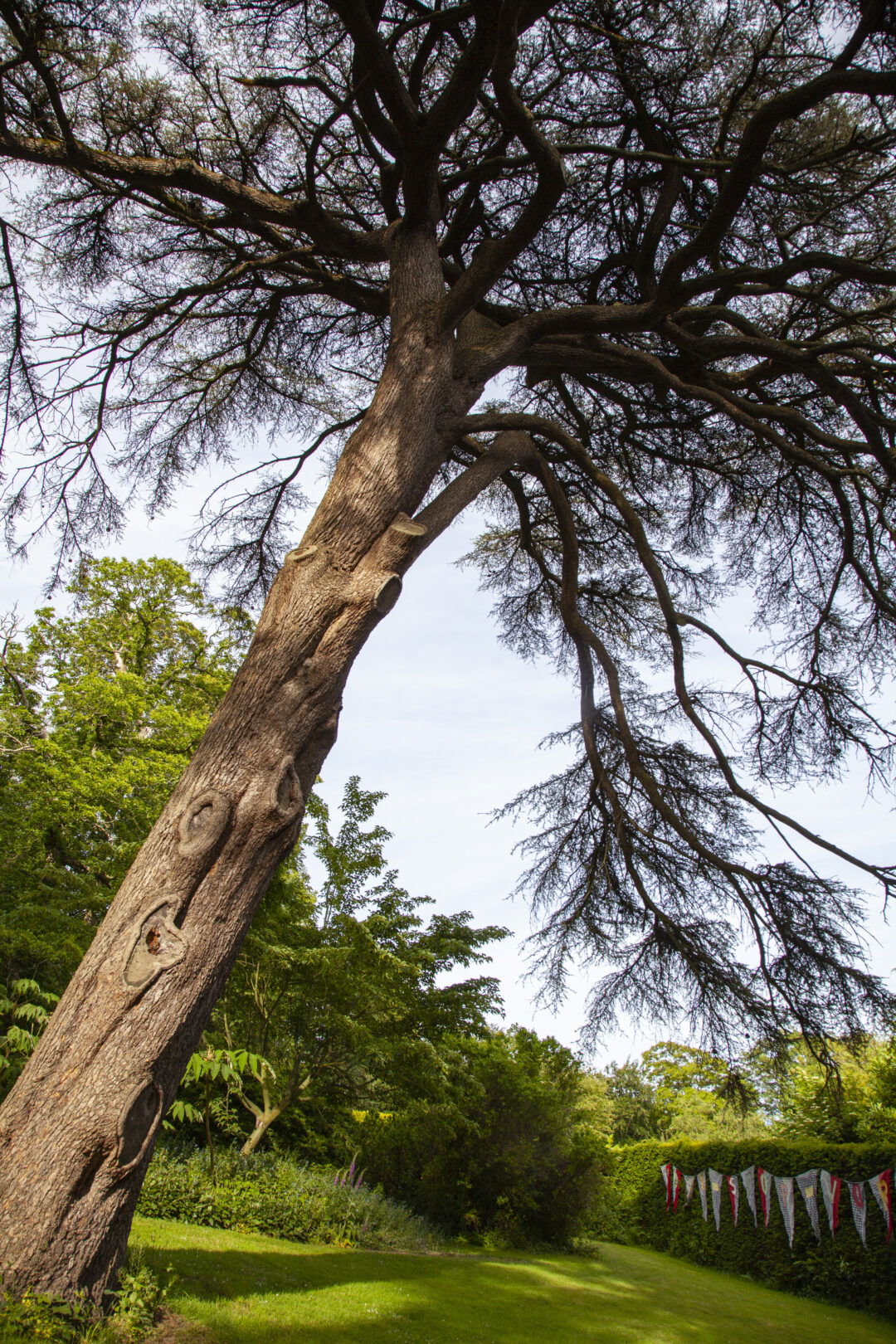Urgent Notice
Hestercombe will be closed all day on Tuesday, December 16th, while the National Grid completes local high-voltage work across the estate. Sorry for any inconvenience this may cause.
Hear more from Claire Greenslade on the recent checks carried out on Hestercombe's Cedar of Lebanon
Hestercombe will be closed all day on Tuesday, December 16th, while the National Grid completes local high-voltage work across the estate. Sorry for any inconvenience this may cause.
The cedar tree on the east side of the daisy steps is Cedrus libani, or commonly known as Cedar of Lebanon. It stands at about 16 meters high and is thought to have been planted during the Portman era.
It is one of our very special trees at Hestercombe and we like to do everything in our power to look after and protect it.
Every year Hestercombe has a tree inspection. Although many of our team have fantastic knowledge of trees, we outsource this job to a professional so that the trees are seen with fresh eyes. The team’s job is then to be the day to day eyes on the ground- or in this case in the canopy too! The tree inspection will cover all of our older more veteran trees to protect them and extend their lives for as long as possible. It also looks at any trees that are near paths, and therefore people, to make sure that we keep visitors safe.
The Cedar is one of our favourite trees. It looks solid and healthy, but it does have a lean, and so carries a lot of weight on one side. The cedar would be difficult for a tree surgeon to climb as all the branches where they could attach ropes are at the top of the tree. Often tree surgeons would use a Mobile Elevated Working Platform (cherry picker) to have a good look at the canopy without having to climb.
In this case the lay of the land makes this more difficult due to access and a sloped site. We wanted to just check that the trees timber was good and strong so we commissioned some extra examinations to be sure.

The extra check started with a sounding mallet. This is a small mallet made of nylon. It is used to tap around the tree so that the tree inspector can listen to the acoustics given off by the tree's trunk. The user listens for changes in sound to see if they can detect areas where it might be hollow, or areas where it might be softer.
Alongside this technique two bits of tech were used, a PiCUS and a Resistograph.
The PiCUS is a sonic tomograph and is a bit like an ultra sound. It is a non-invasive method of determining decay in trees. Several nails are put at points around the circumference of the tree and are attached to sensors that ‘talk’ to a computer.

Sound waves are passed through the trunk to create a tomogram which shows the consistency of wood throughout the tree and will show any signs of decay.
The second bit of tech is a Resistograph. This is basically like a hand held drill but it uses a long, needle thin part to drill into the trunk. This makes a graph that will measure the resistance of the wood that it is being drilled into.
It is important to understand that a hollow tree can still be a healthy tree worth retaining, both these apparatus will aid in a decision for future care of the tree and will provide us with reassurance that the tree still has suitable remaining wood for its preservation and safety.
Over the coming weeks, we'll be sharing lots more information on the work we're doing to protect and preserve the incredible trees in our gardens. Stay up-to-date by signing up to our newsletter and following us on social media.
